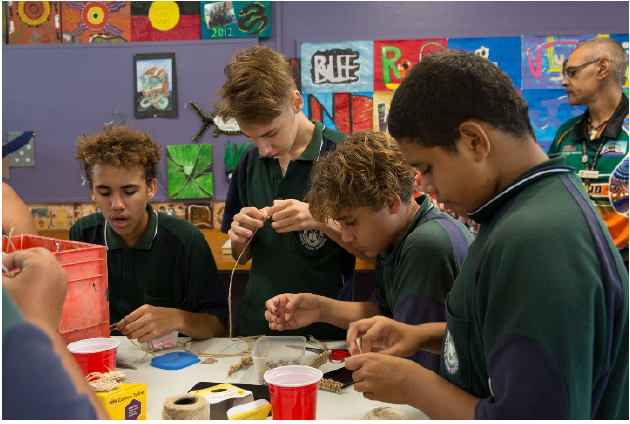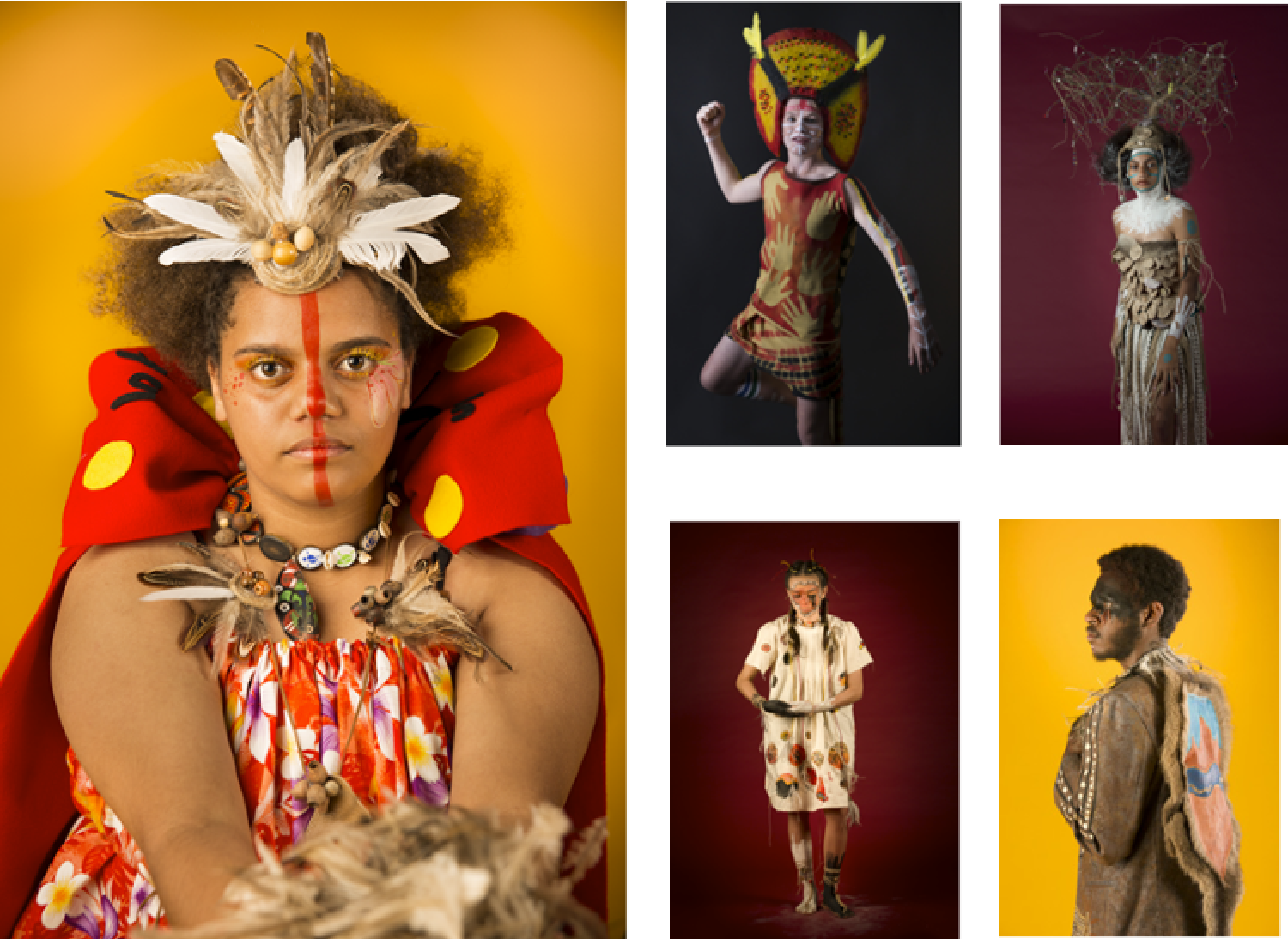People, Culture and Country in Townsville
- 10 Apr 2019
A residency across Townsville High schools created new wearable artwork, reflecting the student’s respect and pride in their Indigenous heritage and cultures.
What
People, Culture and Country is an artist-in-residence project managed by Christina Papadimitriou to develop collaborative wearable artwork based on students’ culture. In 2018, the project involved 65 Aboriginal and Torres Strait Islander students from seven Townsville high schools.
Through a series of workshops, students worked with Indigenous artists to learn traditional and contemporary skills and techniques, developing their wearable art pieces through painting, printmaking and weaving. Students also met regularly with their art teachers and other support staff to develop ideas and complete their artworks.
The project culminated in an exhibition at the Riverway Arts Centre in September 2018 of 10 collaboratively-made artworks. Fifty photographs featuring the students modelling their wearable artworks were also on display, along with 11 short videos documenting the project and the artworks.
A catalogue commemorated the event and included the stories behind each of the artworks. An education resource kit was also developed to enable students to engage with the artworks on a deeper level.
When and where
April to November 2018, Townsville
Key stats
- 7 Townsville high schools involved
- 10 collaboratively-made wearable artworks
- 14 Queensland artists/arts workers supported
- 65 Aboriginal and Torres Strait Islander students
Arts Queensland investment
$20,000 - Artist in Residence (AIR) program 2017-18
The AIR program 2017-18, supported through Arts Queensland and Department of Education, connected artists and arts organisations with students and teachers.
Outcomes
- The nature of the project encouraged student collaboration, communication and team problem-solving skills. Students gained more confidence in themselves and their culture, from “sharing ideas, beliefs and ‘culture’ in a non-judgmental environment”.
- Students felt an increased connection with family, culture, and country. One teacher commented that the students:
“…learnt more about themselves and where they come from. At the start some were very vague about where their family was from, at the end they had spoken to family and could tell me about their family history”.
- The project involved local artists as mentors to the students.
- Students were motivated to attend school to participate in the project with a reported 56% increase in overall attendance in Semester 2 (when the project began) compared to Semester 1.
- The short Intensive workshops had two or more schools coming together to learn and participate. This supported students to make new friends and learn more about each other.
- The exhibition (the wearable artworks, catalogue, and videos) was a great way to share Aboriginal and Torres Strait Islander cultures with the wider community.
- Videos of students and artwork were shown on BushTV.
Feedback
We worked really hard on our piece. Thank you to the team for making the idea come alive! We love to share our stories and culture through any way possible. We love it when people want to listen and learn about our history. Year 10 student
All of the workshops were successful, they each brought a unique and highly skilled process to the students. They also engaged in cultural conversations which was very enriching. Teacher
The simple frock (“Lost” – based on the Stolen Generation), absolutely shattered me with emotion. The statements are very powerful and reminds us of our ancient Indigenous culture and its importance in today’s modern world. Audience member
Congratulations!!! Absolutely blown away by the creativity and inspiration behind the stories! Keeping culture alive! Visitor Book
Reflections and learnings
Involvement across of a number of schools did present some logistical challenges particularly with general school programs competing for time with the project.
A strategy was put in place for a regular time slot for students and art teachers to meet and discuss project planning.
Tips for others
Contact traditional owners/elders via appropriate channels and keep them in the loop.
Invite parents/family/elders/community to provide guidance and support to students by visiting and sharing stories.
Visit schools regularly and document each stage of the project (photographs/videos etc.).
Allow enough time for compilation of artefacts e.g. photographs/catalogue/videos.
Hold a formal presentation to acknowledge participants and others involved in the project.
Celebrate successes!!!
What next?
The People, Culture and Country project will occur again in 2019 with the program being extended to upper primary students.
Find out more
People, Culture and Country booklet: includes the story behind 10 artworks
The Aboriginal and Torres Strait Island art project: short video documenting the mentoring, design and making of the art pieces.
BushTV People, Culture and Country: short features on each of the art works with talks by students involved.
A pdf version (PDF) (678.2 KB) of this case study is available.





